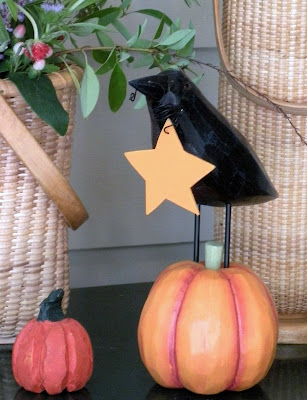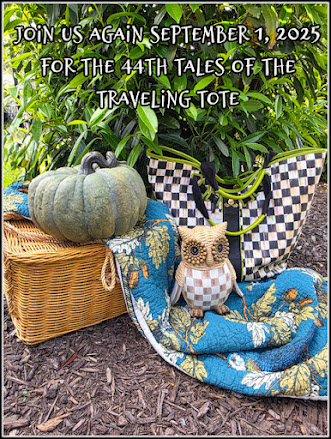Maggie and her husband live in the beautiful countryside of Normandy, France, in a charming 16th and 18th century Prespbytery that they lovingly restored 15 years ago. We have been friends through the years, having first met in 2000 while attending an Annual Meeting of Quimper Club International. This past October "the chef" and I had the pleasure of experiencing Normandy Life in real time.
Each morning we woke to the most
incredible views just outside our windows.

In the quiet hours of early morning,
the fog gently rose, and the rosy pink sky
ushered in the sunshine of a new day.
All about us were pastures of fresh green grass and herds of gentle Normandy cows grazing about. Every view offered a photo perfect scene that one might find in the quintessential landscape of a pastoral setting.
Normandy cows, prized for both their
protein rich milk and quality beef,
are characteristically brown and white.
Not far down the lane is a Romanesque style church built on the site of an old chapel. The fishbone pattern, still visible in the choir and the nave, shows that it was built in the 11th century. The churchyard with its ancient tombstones and grave markers is often the subject of Maggie's magnificent images for Shadow Shot Sunday @ Hey Harriets.
More delights are found wandering
the beautiful lawns and gardens.
A perfect sunny spot for two friends to sit and chat.
Inside one is inspired by the awe of living
in such a beautiful, historic treasure.
There are wonderful pieces of Quimper.
Special touches of French symbols and . . .
Sweet Mr. Ben
Along with the frisky M'selle Fleur.
Every morning there was fresh
French bread, croissants, and pain au chocolat.
Always served on Emma Bridgewater's
pottery from the classic Black Toast Collection.
This dishaholic was totally smitten!
One morning Maggie and I drove to nearby Bayeux

To visit the famous Bayeux Tapestry
and walk through the magnificent
Bayeux Cathedral
that was consecrated in 1077.

We enjoyed a delicious lunch of a Normandy crepe
filled with fresh greens - a perfect ladies lunch.
While the girls were away,
the husbands were back at the
Presbytery reading, visiting, and lunching
alfresco on the lawn in the warm sunshine.
Delicious evening meals were prepared by Mr. B, dining on Chicken Divan one meal and another on the best Boeuf Bourguignon we've ever tasted. The mosaic above features a meal we enjoyed out at a local country restaurant. I think the photos speak for themselves.
As we drove off for more
adventures in the French countryside,
we bid our farewells to good friends
who live an idyllic life in Normandy.
You can find Normandy Life here.
Stop by for a visit and sign up to follow along
as Maggie shares her life in Normandy.
Joining the following:


















































































-min.webp)
.JPG)























.jpg)












































































.jpg)






